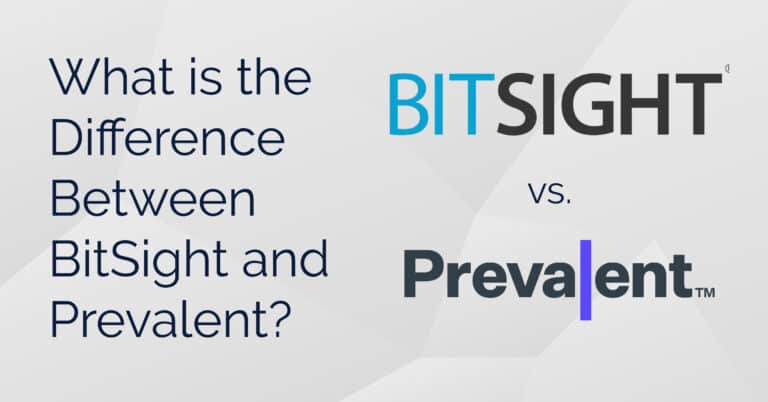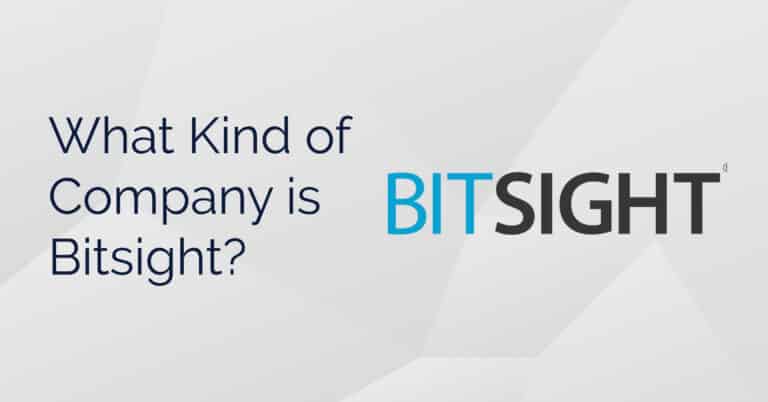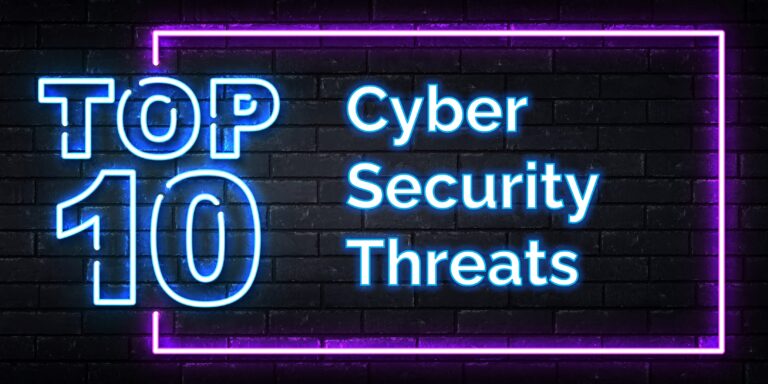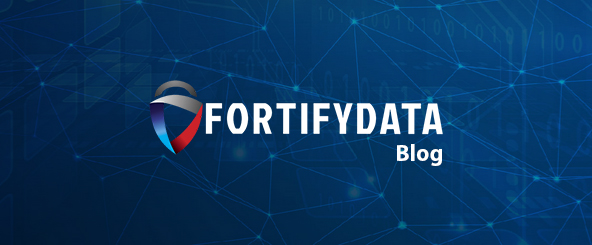Attack surface management, digital threat management and security ratings are tools that help organizations measure and take a proactive approach to cyber defense; offering insights into an organization’s security posture and helping them stay one step ahead of potential threats. RiskIQ may seem like Bitsight competitors, but there is a difference between Bitsight and RiskIQ.
Bitsight is a security ratings vendor that collects information about an organization’s internet facing assets via passive assessments, network sensor collection, and OSINT data collection to derive a security rating. What are security ratings used for?
RiskIQ is an attack surface management vendor focused on direct assessment of an organization to identify internet facing assets and continuously identify new ones to help in managing shadow IT.
Both Bitsight and RiskIQ are tools for organizations seeking to evaluate their security posture and mitigate digital threats.
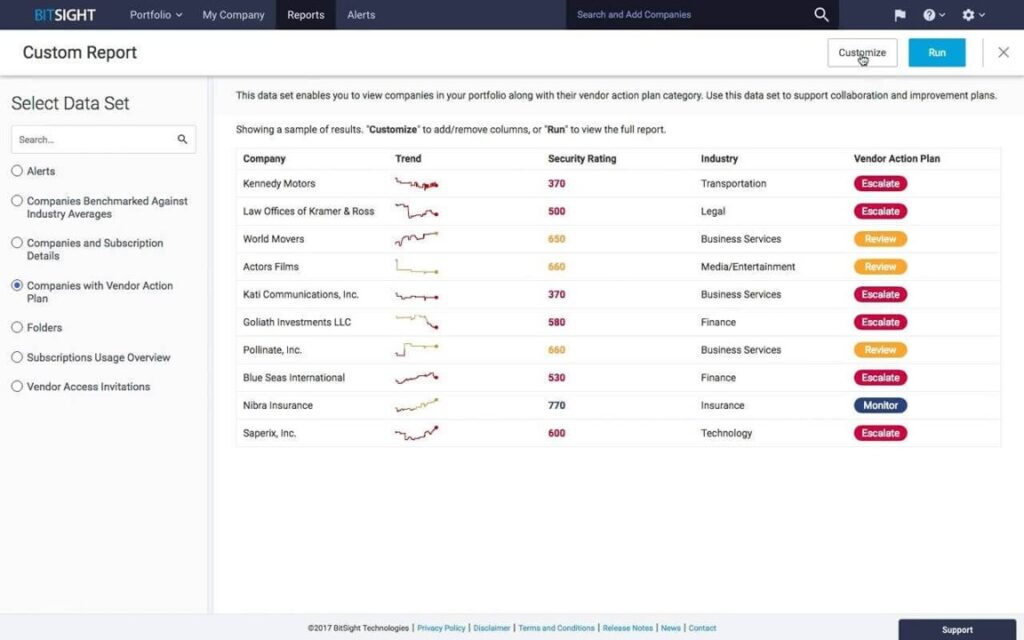

Additional Resources
Cybersecurity rating scale explained
What are security ratings used for?
How are security ratings created?
What is a good cybersecurity rating?
How do you improve your security rating?
Is it easy to switch security ratings providers?
Why is my security rating wrong?
What Kind of Company is BitSight?
Select What are the 5 C’s of Cybersecurity?
What is the Highest Security Rating?
What is the difference between SecurityScorecard and BitSight?
What is RiskIQ used for?
BitSight and RiskIQ are both tools for organizations seeking to evaluate their security posture and mitigate digital threats. But what, exactly, is RiskIQ used for?
RiskIQ is a cybersecurity company that specializes in digital threat management. Its platform provides comprehensive visibility into an organization’s digital attack surface. This includes monitoring websites, mobile apps, and social media accounts. By using RiskIQ, or RiskIQ competitors, businesses can gain insights into external threats, such as malicious websites, phishing campaigns, and brand impersonation. Bitsight and Bitsight competitors have slightly different ways to monitor external digital threat presence of an organization. Some of the Bitsight competitors and RiskIQ competitors evaluate the businesses through direct assessments with less reliance on passive assessment and OSINT data collection.
Read the Whitepaper
The Evolution of Cybersecurity Ratings and How They Can Boost Risk Visibility

Is RiskIQ owned by Microsoft?
You may be wondering if RiskIQ has any significant corporate affiliations. Let’s address the question: Is RiskIQ owned by Microsoft? Yes, RiskIQ is owned by Microsoft. RiskIQ acquired by Microsoft in July 2021 for $500 million.
Microsoft has said that it acquired RiskIQ to strengthen its cybersecurity offerings and help customers better protect their digital transformation and hybrid work environments.
Since the acquisition, Microsoft has integrated some of RiskIQ’s core features into its own security platform, including Microsoft Defender Threat Intelligence and Microsoft Defender External Attack Surface Management.
RiskIQ continues to operate as a standalone business unit within Microsoft, but it is now aligned with Microsoft’s security strategy and is working to integrate its products and services more closely with Microsoft Defender.
How does RiskIQ work?
RiskIQ is an attack surface management (ASM) platform that helps organizations discover, assess, and mitigate risks to their digital assets. It does this by continuously monitoring the internet for information about an organization’s digital footprint, including websites, domains, IPs, social media profiles, and mobile apps. It is different enough that it isn’t included with Bitsight competitors.
RiskIQ’s platform uses a variety of techniques to gather data, including:
- Passive reconnaissance: This involves collecting data from publicly available sources, such as search engines, social media, and domain registries.
- Active scanning: This involves actively probing the internet to identify and analyze an organization’s digital assets.
- Threat intelligence: This involves collecting and analyzing data about known threats, such as malware, phishing attacks, and vulnerabilities. Once RiskIQ has gathered data about an organization’s digital footprint, it analyzes the data to identify and prioritize risks. RiskIQ then provides organizations with a dashboard that allows them to view and manage their risks. This data is also available via the RiskIQ API.
RiskIQ can also help organizations to mitigate risks by providing them with a variety of tools, such as:
- Vulnerability scanning: This helps organizations to identify and fix vulnerabilities in their software and systems.
- Phishing detection: This helps organizations to identify and block phishing attacks.
- Brand protection: This helps organizations to protect their brand from being used fraudulently.
Who owns RiskIQ?
As of August 2021, RiskIQ is owned by Microsoft. RiskIQ acquired by Microsoft in July 2021 for $500 million. Before the acquisition, RiskIQ was a privately held company.
RiskIQ is a cybersecurity company that provides solutions for attack surface management (ASM), digital risk protection (DRP), and brand protection. The company’s products and services help organizations to identify, assess, and mitigate risks to their digital assets, including websites, mobile apps, and social media accounts.
The new RiskIQ Microsoft entity is part of the company’s broader strategy to invest in cybersecurity and help customers protect their digital transformation and hybrid work environments. Microsoft has said that it plans to integrate RiskIQ’s solutions into its own security platform to provide customers with a more comprehensive and unified view of their security posture.
What is the difference between BitSight and RiskIQ?
Here is a comparison of BitSight and RiskIQ. You can compare this information against Bitsight competitors and RiskIQ competitors. A FortifyData comparison is included:
| Feature | BitSight | RiskIQ | FortifyData |
|---|---|---|---|
| Primary Focus | Security Ratings | Attack Surface Management | Automated Cyber Assessments + Security Ratings |
| Data Sources | Publicly available sources, third-party data providers, directly from organizations | Passive reconnaissance, active scanning, threat intelligence | Active scanning of organizations, threat intelligence |
| Methodology | Assigns a security rating based on a variety of factors | Provides a detailed view of an organization’s digital footprint and identifies risks | Findings from direct assessments are analyzed with AI platform to prioritize vulnerabilities and identified threats |
| Use Cases | Assessing vendor and partner security, investment risk assessment, cyber insurance underwriting, government cybersecurity | Identifying and mitigating cyberattacks, improving compliance, increasing ROI | Assessing vendor and partner security, investment risk assessment, cyber insurance underwriting, government cybersecurity, Identifying and mitigating cyberattacks, increasing ROI |
Ultimately, the best choice for an organization will depend on their specific needs and requirements. If an organization is looking for a point-in-time view of their security posture, BitSight is a good option. If an organization is more focused on identifying and mitigating cyberattacks, RiskIQ is a good option.
Here are some additional factors to consider when choosing between BitSight and RiskIQ:
Cost: BitSight and RiskIQ are both enterprise-grade products, so they are priced accordingly. However, RiskIQ is generally considered to be the more expensive of the two products. FortifyData has right-sized pricing for any organization.
Ease of use: Both BitSight and RiskIQ are relatively easy to use. However, RiskIQ is generally considered to be the more user-friendly of the two products. FortifyData clients rave about the ease of use and the customer support.
As always companies should explore Bitsight competitors and RiskIQ competitors to make an informed selection of the vendor that best suits their needs.
FortifyData’s Methodology and Difference Between BitSight and RIskIQ
FortifyData, a BitSight competitor, when the focus is narrowed on just the security rating, provides a standard security rating scale is similar to a credit score. The security rating scale we employ ranges from 350 –900 with explanations below.
FortifyData enables clients to reflect the context of their business and cyber risk in the security rating. Clients can classify identified assets by operational criticality (also allowing for identification of data types on devices) and respond to risks identified by recording the compensating control(s) in place to reduce the likelihood of threats occurring. This produces the most accurate security rating risk representation by the published security rating score.
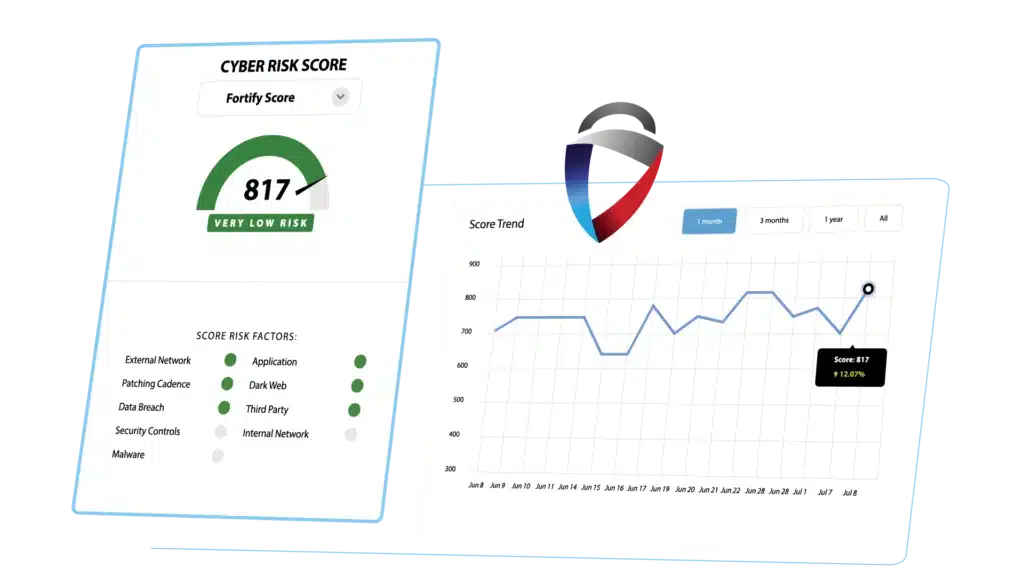
FortifyData enables clients to create additional, configurable security rating risk models to produce security ratings unique to their cyber risk appetite and threat profile. The weightings of the factors can be adjusted to help further tune the risk representation of a company as ‘one-size-fits-all’ rarely works effectively.
The FortifyData security rating score methodology is publicly available which details the specific cyber risk and vulnerability factors that go into the security rating as well as the weightings. We are the only security rating provider with a patent pending on their configurable security rating risk rating models which allows clients to create additional security rating models where you can define the weighting of the factor’s effect on the security rating scale.
Discover how FortifyData can revolutionize your cybersecurity strategy. Get a Free Cyber Risk Assessment to discover current cybersecurity risks within your organization, and find actionable information to improve your security posture.
Now You Know the Differences between Bitsight and RiskIQ
BitSight for security ratings and RiskIQ for attack surface management are tools for organizations striving to maintain strong security postures in the digital age. While both platforms aim to provide valuable insights, they have their unique features and capabilities. To make an informed decision, organizations should assess their specific needs and the aspects of security ratings that matter most to them.
As you consider the differences between BitSight and RiskIQ, remember that a holistic approach to cybersecurity often involves using multiple tools in tandem. To determine which solution aligns best with your organization’s goals, it’s essential to evaluate your requirements and explore these platforms further.

